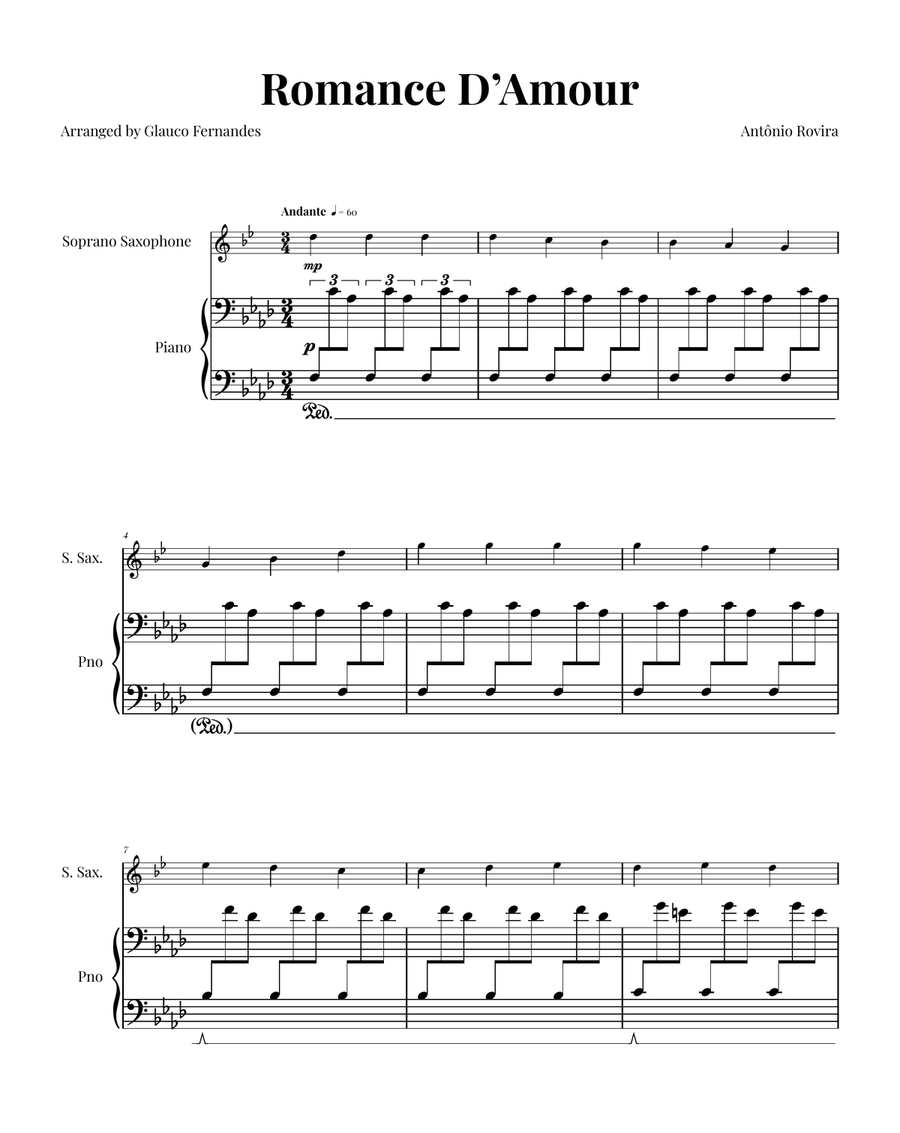Piano,Soprano Saxophone - Level 2 - Digital Download SKU: A0.1456233 Composed by Traditional. Arranged by Glauco Fernandes. Chamber,Classical,Instructional,Traditional,Wedding. Score and part. 4 pages. Glauco Fernandes #1034944. Published by Glauco Fernandes (A0.1456233). Spanish Romance (Romanza - Romance D'Amor) - Easy Intermediate ArrangementAre you passionate about music? We have the perfect offer for you! Presenting the exclusive sheet music arrangement of Spanish Romance, also known as Romanza, Romance D'Amor, and Jeux Interdits, tailored for easy intermediate musicians.Why choose our arrangement?This arrangement has been carefully crafted to capture the essence and beauty of the original piece while being accessible to easy intermediate level musicians. Every note is designed to provide the best musical experience.The sheet music is easy to follow, making it ideal for students learning to play, teachers seeking quality educational material, and professionals performing at events, including weddings. With precise indications, you will be able to perform the music with confidence and ease.Moreover, Spanish Romance is a versatile piece that can be performed on various occasions, from intimate concerts to larger events. Its captivating melody is sure to enchant any audience.Add Spanish Romance to your repertoire and captivate everyone with this timeless melody. Get your sheet music now!Note: The authorship of Spanish Romance (also known as Romanza, Romance D'Amor, Jeux Interdits) is somewhat uncertain and disputed. Many sources attribute the composition to anonymous creators, while others suggest names such as Narciso Yepes, Antonio Rubira, or even Fernando Sor. However, there is no definitive consensus on the true composer of the piece.Buy Sheet MusicTags: Spanish Romance, Romanza, Romance D'Amor, Sheet Music, Spanish Romance Sheet Music, Spanish Romance Sheet, Spanish Romance Sheet Music, Spanish Romance Sheet Music, Spanish Romance Sheet Music PDF, Sheet, Spanish Guitar, Spanish, Spanish Romance Tutorial, Spanish Romance, Spanish Romance, Romance De Amor, Spanish Romance, Romance, Spanish Romance Lesson, , Spanish Romanza, Spanish Romance Sheet PDF, Romance, Romance De Amor, Romance De Amor Guitar Tutorial, Anonymous Romance, Romance De Amor Guitar, Romance D'Amour Guitar, Vol. 11 Romance D'Amour, Romance Of The Guitar, Romance D'Amour (Anonymous), Romance Anónimo, Romance Anonimo, Romance De España, Romance De Amor Lesson, Mariage D'Amour, Mariage D'Amour Piano, Romance D'Amour, Easy Intermediate Arrangement, Sheet Music, Music Students, Music Teachers, Wedding Music, Classical Music, Spanish Romance.
